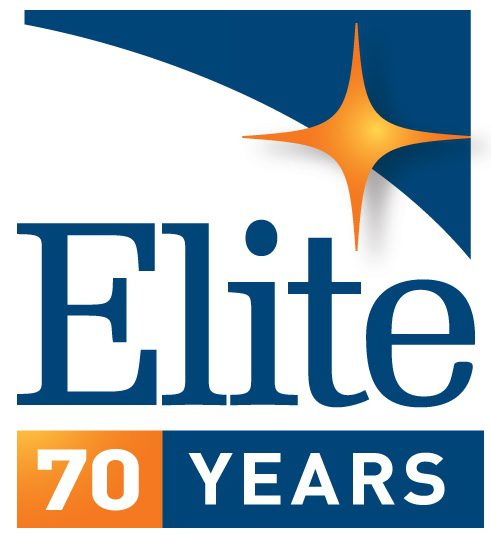January 25, 2023
Agricultural tools have evolved from their humble beginnings into machines that plant, nourish, and harvest while monitoring parameters like seed spacing, depth, and moisture content. Construction equipment has evolved in a similar way. The electronics that control those functions need to meet electromagnetic compatibility (EMC) requirements for safe and reliable operation.

At Elite we perform regulatory EMC testing on large vehicles and electronic subassemblies used in construction, agriculture, and forestry. These impressive systems — bulldozers, combine harvesters, tractors, and the like — are making news by integrating wireless technology, advanced sensor tech, high speed networks, and software to create automated and nearly autonomous systems. The complexity of these machines and their inherent need for operational safety makes EMC testing a crucial aspect of their development.
Agricultural (Ag) and forestry machinery includes tractors and all manner of mobile and hand-held equipment, extending to those used in landscaping and gardening.
Construction machinery includes earth-moving equipment: excavators, bulldozers, loaders, as well as cranes and lifting systems, pavers, and related large machines.
EMC testing for these large systems is driven by two forces. One is the manufacturer, whose motivation is to build confidence in its brand name by ensuring the safety and reliability of its products. The other force is from government regulatory bodies whose responsibility is to set safety standards and to protect the public electromagnetic spectrum.
In the US, the Federal Communications Commission (FCC) Part 15.103 rules for unintentional RF emissions exempt vehicles and electronic sub-assemblies (ESAs) from testing, including Ag, forestry, and construction machinery. Innovation, Science and Economic Development (ISED) Canada also exempts vehicles and most ESAs from digital-device emissions testing. The Canadian vehicle EMC regulation ICES-002 is one that specifies broadband emission tests for vehicles powered by internal combustion engines or electric drivetrains. Any wireless transmitters used on vehicles are required to be separately tested and certified.
Neither the US-FCC nor Canada-ISED impose EMC immunity regulatory requirements for vehicles. US-OSHA and Canadian government agencies set a range of workplace safety rules for equipment, but none that address EMC.
In the European Union, the EMC essential requirements for machinery are codified in the EMC Directive 2014/30/EU. For functional safety related EMC performance the requirements come from the Machinery Directive 2006/42/EC. Similar requirements are listed in the Statutory Instruments (SI) for the UKCA marking. Manufacturers are afforded a presumption of conformity with the Directives and Regulations when they apply harmonized standards in full. These standards are published in the European Union (EU) Official Journal and the UK counterpart list.
Ag Machinery

Ag and forestry “machinery” is equipment intended for off-road applications. They are generally not used on roadways where unique road-safety hazards need to be specifically assessed. Once machinery is evaluated for the applicable Directives and compliant with published harmonized standards, the manufacturer issues a Declaration of Conformity (DoC), and the product is CE Marked and/or UKCA Marked.
The harmonized standard for Ag and forestry machinery is EN ISO 14982:2009 which covers EMC emissions and immunity for vehicles and for electronic subassemblies (ESAs). The UK register of standards also lists this same standard.
Construction Machinery

For construction equipment EMC, the EU harmonized standard is EN ISO 13766-1:2018. It covers emissions and immunity for vehicles and ESAs and is also the same standard for the UK. The Machine Directive EMC requirements addressing functional safety on construction equipment are listed in EN ISO 13766-2:2018.
It’s important to note that the construction machinery standard, EN 13309:2010, became obsolete on June 30, 2021. Any products currently placed on the European market that list EN 13309 on their DoC are no longer presumed compliant and should be evaluated against the requirements of EN ISO 13766-1:2018.
Ag Tractors

Ag and forestry tractors and machinery have similar EMC requirements, but they have different conformity-assessment processes. The European compliance process for Ag and forestry “tractors” is type-certification by a third party notified body. When the certification is complete the tractor is “E-Marked”. In contrast, the Ag and forestry “machinery” conformity assessment is by internal production control, also referred to as manufacturer self-declaration. When completed the machine is “CE Marked” and/or “UKCA Marked”.
Ag and forestry tractor regulations are defined in the European framework Regulation (EU) 167/2013 and subsequent revisions. For EMC, the framework Regulation (Article 17.2.g) points to Regulation (EU) 2015/208 ANNEX XV for the technical requirements. As an option, a Notified Body may also type certify the tractor following the technical requirements in UNECE Regulation 10.6. The EMC requirements in REG 10.6 are similar to those listed in EN ISO 14982 and EN ISO 13766. However, it is common to see more stringent testing (than in REG 10.6) applied as agreed upon by the vehicle manufacturer and the notified body.
For manufacturers of electronic sub-assemblies (ESAs) whose product can be used on a wide range of finished machines such as Ag, forestry, construction machinery, or even road vehicles, Elite can perform a single suite of tests that covers all equipment types and off road and on road vehicle specifications.
In next month’s Elite Insider, we’ll discuss additional requirements for Ag, forestry, and construction machinery that address the functional-safety aspects of compliance. We’ll also explain the coming standards for ISO/DIS 14982:2021.
Stay tuned to Elite’s blog for more, and contact Elite with questions on your product’s compliance needs.
